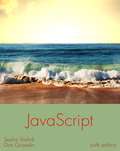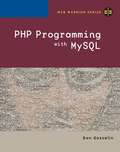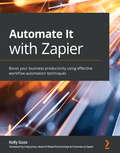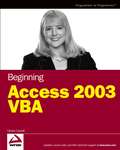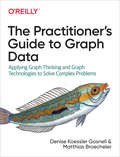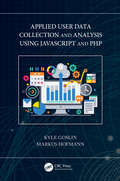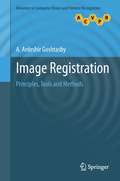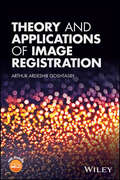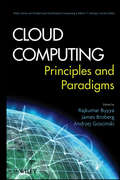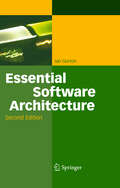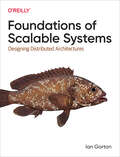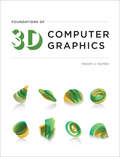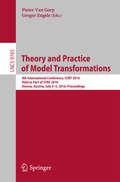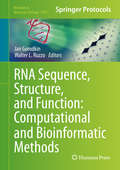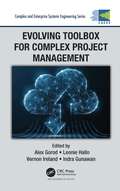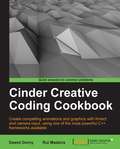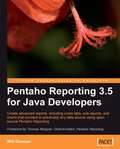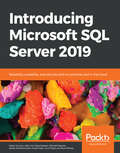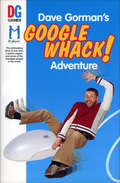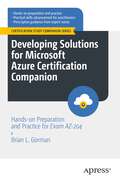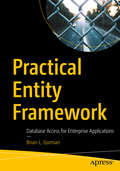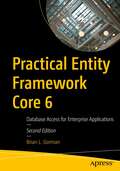- Table View
- List View
Javascript
by Don Gosselin Sasha VodnikJavaScript is a client-side scripting language that allows web page authors to develop interactive web pages and sites. Although JavaScript is considered a programming language, it is also a critical part of web page design and authoring. This is because the JavaScript language enables web developers to add functionality directly to a web page's elements. The language is relatively easy to learn, allowing non-programmers to quickly incorporate JavaScript functionality into a web page. In fact, because it is used extensively in the countless web pages that are available on the World Wide Web, JavaScript is arguably the most widely used programming language in the world.
PHP Programming with MySQL
by Don GosselinAs the first true academic textbook in the market to combine PHP with MySQL, PHP Programming with MySQL, by Don Gosselin covers one of the fastest growing technology combinations for developing interactive Web sites.
PHP Programming with MySQL
by Don GosselinAs the first true academic textbook in the market to combine PHP with MySQL, PHP Programming with MySQL, by Don Gosselin covers one of the fastest growing technology combinations for developing interactive Web sites.
Automate It with Zapier: Boost your business productivity using effective workflow automation techniques
by Kelly Goss Cody JonesBuild easy and accessible solutions for automating mundane processes in marketing, sales, operations, and finance to enable teams to focus on core tasksKey FeaturesLearn Zapier and find solutions to specific problems with this comprehensive yet concise guideExplore various scenarios describing specific business problems and how they can be solved with ZapierDiscover expert tips and practical examples to harness the full potential of ZapierBook DescriptionZapier is an emerging no-code workflow automation technology that enables organizations to connect their cloud-based and web applications and automate data transfer between them. Zapier's built-in features and flexibility allow users to integrate thousands of business applications and create simple to complex automation to reduce time spent on repetitive tasks, thereby increasing productivity. This book is a must-have for business owners, their employees, and independent freelancers and contractors looking to use Zapier for business process automation. The book takes a hands-on approach to implementation and associated problem-solving methodologies that will have you up-and-running and productive in no time while leveling up your automation skills. You'll discover how to plan your automation building for optimal results, what are the native features available in Zapier, and the applications that connect with it, as well as how to optimally configure your workflows to automate your processes in as few steps as possible. Finally, you'll find out how to create advanced workflow automation from scratch and learn how to troubleshoot issues. By the end of this Zapier book, you'll be able to build your own advanced workflow automation using Zapier, addressing the key pain points encountered in businesses with manual and repetitive tasks.What you will learnThink creatively to plan your business workflows to overcome specific business problemsGet to grips with the native features and built-in applications available in ZapierExplore different types of third-party business applications that integrate with ZapierConfigure your workflows optimally to automate business processes and minimize task usageUse Zapier's library of pre-built workflows and create advanced workflows from scratchDiscover the extensive functionality and practical uses of Zapier's built-in appsWho this book is forThis book is for solutions architects, process consultants, business analysts, virtual assistants, digital marketers, CRM consultants, online business managers, technical consultants, bookkeepers, and accountants who want to deploy effective automation techniques in Zapier. This book will help micro, small, or medium-sized businesses to increase their productivity using workflow automation with Zapier, as well as freelancers and contractors providing digital process improvement, systemizing, and automation services. No prior experience with business process automation or Zapier is required.
Lucene in Action
by Otis Gospodnetic Erik Hatcher Michael McCandlessWhen Lucene first hit the scene five years ago, it was nothing short ofamazing. By using this open-source, highly scalable, super-fast search engine,developers could integrate search into applications quickly and efficiently.A lot has changed since then-search has grown from a "nice-to-have" featureinto an indispensable part of most enterprise applications. Lucene now powerssearch in diverse companies including Akamai, Netflix, LinkedIn,Technorati, HotJobs, Epiphany, FedEx, Mayo Clinic, MIT, New ScientistMagazine, and many others.Some things remain the same, though. Lucene still delivers high-performancesearch features in a disarmingly easy-to-use API. Due to its vibrant and diverseopen-source community of developers and users, Lucene is relentlessly improving,with evolutions to APIs, significant new features such as payloads, and ahuge increase (as much as 8x) in indexing speed with Lucene 2.3.And with clear writing, reusable examples, and unmatched advice on bestpractices, Lucene in Action, Second Edition is still the definitive guide todeveloping with Lucene. Purchase of the print book comes with an offer of a free PDF, ePub, and Kindle eBook from Manning. Also available is all code from the book.
Beginning Access 2003 VBA
by Denise M. GosnellWhat is this book about?Written by an Access programmer with more than 10 years of VBA experience, this is the perfect guide for Access users who are ready to take their databases to the next level, or for programmers who are new to Access or VBA. Veteran Access developer Denise Gosnell shows readers the ins and outs of Access VBA and provides plenty of source code, and fully developed sample applications to guide you along the way.Not only do readers learn to build "stand-alone" desktop applications, but readers also learn how to integrate Access applications with Web Services, and SQL Server.
The Practitioner's Guide to Graph Data: Applying Graph Thinking and Graph Technologies to Solve Complex Problems
by Denise Gosnell Matthias BroechelerGraph data closes the gap between the way humans and computers view the world. While computers rely on static rows and columns of data, people navigate and reason about life through relationships. This practical guide demonstrates how graph data brings these two approaches together. By working with concepts from graph theory, database schema, distributed systems, and data analysis, you’ll arrive at a unique intersection known as graph thinking.Authors Denise Koessler Gosnell and Matthias Broecheler show data engineers, data scientists, and data analysts how to solve complex problems with graph databases. You’ll explore templates for building with graph technology, along with examples that demonstrate how teams think about graph data within an application.Build an example application architecture with relational and graph technologiesUse graph technology to build a Customer 360 application, the most popular graph data pattern todayDive into hierarchical data and troubleshoot a new paradigm that comes from working with graph dataFind paths in graph data and learn why your trust in different paths motivates and informs your preferencesUse collaborative filtering to design a Netflix-inspired recommendation system
Applied User Data Collection and Analysis Using JavaScript and PHP
by Kyle Goslin Markus HofmannApplied User Data Collection and Analysis Using JavaScript and PHP is designed to provide the technical skills and competency to gather a wide range of user data from web applications in both active and passive methods. This is done by providing the reader with real-world examples of how a variety of different JavaScript- and PHP-based libraries can be used to gather data using custom feedback forms and embedded data gathering tools. Once data has been gathered, this book explores the process of working with numerical data, text analysis, visualization approaches, statistics, and rolling out developed applications to both data analysts and users alike.Using the collected data, this book aims to provide a deeper understanding of user behavior and interests, allowing application developers to further enhance web-application development. Key Features: Complete real-world examples of gathering data from users and web environments Offers readers the fundamentals of text analysis using JavaScript and PHP Allows the user to understand and harness JavaScript data-visualization tools Integration of new and existing data sources into a single, bespoke web-based analysis environment
Image Registration
by A. Ardeshir GoshtasbyThis book presents a thorough and detailed guide to image registration, outlining the principles and reviewing state-of-the-art tools and methods. The book begins by identifying the components of a general image registration system, and then describes the design of each component using various image analysis tools. The text reviews a vast array of tools and methods, not only describing the principles behind each tool and method, but also measuring and comparing their performances using synthetic and real data. Features: discusses similarity/dissimilarity measures, point detectors, feature extraction/selection and homogeneous/heterogeneous descriptors; examines robust estimators, point pattern matching algorithms, transformation functions, and image resampling and blending; covers principal axes methods, hierarchical methods, optimization-based methods, edge-based methods, model-based methods, and adaptive methods; includes a glossary, an extensive list of references, and an appendix on PCA.
Theory and Applications of Image Registration
by A. Ardeshir GoshtasbyA hands-on guide to image registration theory and methods—with examples of a wide range of real-world applications Theory and Applications of Image Registration offers comprehensive coverage of feature-based image registration methods. It provides in-depth exploration of an array of fundamental issues, including image orientation detection, similarity measures, feature extraction methods, and elastic transformation functions. Also covered are robust parameter estimation, validation methods, multi-temporal and multi-modality image registration, methods for determining the orientation of an image, methods for identifying locally unique neighborhoods in an image, methods for detecting lines in an image, methods for finding corresponding points and corresponding lines in images, registration of video images to create panoramas, and much more. Theory and Applications of Image Registration provides readers with a practical guide to the theory and underpinning principles. Throughout the book numerous real-world examples are given, illustrating how image registration can be applied to problems in various fields, including biomedicine, remote sensing, and computer vision. Also provided are software routines to help readers develop their image registration skills. Many of the algorithms described in the book have been implemented, and the software packages are made available to the readers of the book on a companion website. In addition, the book: Explores the fundamentals of image registration and provides a comprehensive look at its multi-disciplinary applications Reviews real-world applications of image registration in the fields of biomedical imaging, remote sensing, computer vision, and more Discusses methods in the registration of long videos in target tracking and 3-D reconstruction Addresses key research topics and explores potential solutions to a number of open problems in image registration Includes a companion website featuring fully implemented algorithms and image registration software for hands-on learning Theory and Applications of Image Registration is a valuable resource for researchers and professionals working in industry and government agencies where image registration techniques are routinely employed. It is also an excellent supplementary text for graduate students in computer science, electrical engineering, software engineering, and medical physics.
Cloud Computing
by Andrzej M. Goscinski James Broberg Rajkumar BuyyaThe primary purpose of this book is to capture the state-of-the-art in Cloud Computing technologies and applications. The book will also aim to identify potential research directions and technologies that will facilitate creation a global market-place of cloud computing services supporting scientific, industrial, business, and consumer applications. We expect the book to serve as a reference for larger audience such as systems architects, practitioners, developers, new researchers and graduate level students. This area of research is relatively recent, and as such has no existing reference book that addresses it.This book will be a timely contribution to a field that is gaining considerable research interest, momentum, and is expected to be of increasing interest to commercial developers. The book is targeted for professional computer science developers and graduate students especially at Masters level. As Cloud Computing is recognized as one of the top five emerging technologies that will have a major impact on the quality of science and society over the next 20 years, its knowledge will help position our readers at the forefront of the field.
Data-Intensive Computing
by Ian Gorton Deborah K. GracioThe world is awash with digital data from social networks, blogs, business, science and engineering. Data-intensive computing facilitates understanding of complex problems that must process massive amounts of data. Through the development of new classes of software, algorithms and hardware, data-intensive applications can provide timely and meaningful analytical results in response to exponentially growing data complexity and associated analysis requirements. This emerging area brings many challenges that are different from traditional high-performance computing. This reference for computing professionals and researchers describes the dimensions of the field, the key challenges, the state of the art and the characteristics of likely approaches that future data-intensive problems will require. Chapters cover general principles and methods for designing such systems and for managing and analyzing the big data sets of today that live in the cloud and describe example applications in bioinformatics and cybersecurity that illustrate these principles in practice.
Essential Software Architecture
by Ian GortonJob titles like "Technical Architect" and "Chief Architect" nowadays abound in software industry, yet many people suspect that "architecture" is one of the most overused and least understood terms in professional software development. Gorton's book tries to resolve this dilemma. It concisely describes the essential elements of knowledge and key skills required to be a software architect. The explanations encompass the essentials of architecture thinking, practices, and supporting technologies. They range from a general understanding of structure and quality attributes through technical issues like middleware components and service-oriented architectures to recent technologies like model-driven architecture, software product lines, aspect-oriented design, and the Semantic Web, which will presumably influence future software systems. This second edition contains new material covering enterprise architecture, agile development, enterprise service bus technologies, RESTful Web services, and a case study on how to use the MeDICi integration framework. All approaches are illustrated by an ongoing real-world example. So if you work as an architect or senior designer (or want to someday), or if you are a student in software engineering, here is a valuable and yet approachable knowledge source for you.
Foundations of Scalable Systems: Designing Distributed Architectures
by Ian GortonIn many systems, scalability becomes the primary driver as the user base grows. Attractive features and high utility breed success, which brings more requests to handle and more data to manage. But organizations reach a tipping point when design decisions that made sense under light loads suddenly become technical debt. This practical book covers design approaches and technologies that make it possible to scale an application quickly and cost-effectively.Author Ian Gorton takes software architects and developers through the principles of foundational distributed systems. You'll explore the essential ingredients of scalable solutions, including replication, state management, load balancing, and caching. Specific chapters focus on the implications of scalability for databases, microservices, and event-based streaming systems.You will focus on:Foundations of scalable systems: Learn basic design principles of scalability, its costs, and architectural tradeoffsDesigning scalable services: Dive into service design, caching, asynchronous messaging, serverless processing, and microservicesDesigning scalable data systems: Learn data system fundamentals, NoSQL databases, and eventual consistency versus strong consistencyDesigning scalable streaming systems: Explore stream processing systems and scalable event-driven processing
Foundations of 3D Computer Graphics
by Steven J. GortlerAn introduction to the basic concepts of 3D computer graphics that offers a careful mathematical exposition within a modern computer graphics application programming interface.Computer graphics technology is an amazing success story. Today, all of our PCs are capable of producing high-quality computer-generated images, mostly in the form of video games and virtual-life environments; every summer blockbuster movie includes jaw-dropping computer generated special effects. This book explains the fundamental concepts of 3D computer graphics. It introduces the basic algorithmic technology needed to produce 3D computer graphics, and covers such topics as understanding and manipulating 3D geometric transformations, camera transformations, the image-rendering process, and materials and texture mapping. It also touches on advanced topics including color representations, light simulation, dealing with geometric representations, and producing animated computer graphics. The book takes special care to develop an original exposition that is accessible and concise but also offers a clear explanation of the more difficult and subtle mathematical issues. The topics are organized around a modern shader-based version of OpenGL, a widely used computer graphics application programming interface that provides a real-time “rasterization-based” rendering environment. Each chapter concludes with exercises. The book is suitable for a rigorous one-semester introductory course in computer graphics for upper-level undergraduates or as a professional reference. Readers should be moderately competent programmers and have had some experience with linear algebra. After mastering the material presented, they will be on the path to expertise in an exciting and challenging field.
Theory and Practice of Model Transformations
by Pieter Van Gorp Gregor EngelsThis book constitutes the refereed proceedings of the 9th International Conference on Model Transformation, ICMT 2016, held in Vienna, Austria, in July 2016, as Part of STAF 2015, the federation of a number of the leading conferences on software technologies. The 13 revised papers were carefully selected from 36 submissions. The papers are organized in topical sections on model transformation languages, model transformation tools, developing model transformations, applications of model transformations, and looking ahead.
RNA Sequence, Structure, and Function: Computational and Bioinformatic Methods
by Jan Gorodkin Walter L. RuzzoThe existence of genes for RNA molecules not coding for proteins (ncRNAs) has been recognized since the 1950's, but until recently, aside from the critically important ribosomal and transfer RNA genes, most focus has been on protein coding genes. However, a long series of striking discoveries, from RNA's ability to carry out catalytic function, to discovery of riboswitches, microRNAs and other ribo-regulators performing critical tasks in essentially all living organisms, has created a burgeoning interest in this primordial component of the biosphere. However, the structural characteristics and evolutionary constraints on RNA molecules are very different from those of proteins, necessitating development of a completely new suite of informatic tools to address these challenges. In RNA Sequence, Structure, Function: Computational and Bioinformatic Methods, expert researchers in the field describe a substantial and relevant fraction of these methodologies from both practical and computational/algorithmic perspectives. Focusing on both of these directions addresses both the biologist interested in knowing more about RNA bioinformatics as well as the bioinformaticist interested in more detailed aspects of the algorithms. Written in the highly successful Methods in Molecular Biology series format, the chapters include the kind of detailed description and implementation advice that is crucial for getting optimal results. Thorough and intuitive, RNA Sequence, Structure, Function: Computational and Bioinformatic Methods aids scientists in continuing to study key methods and principles of RNA bioinformatics.
Evolving Toolbox for Complex Project Management (Complex and Enterprise Systems Engineering)
by Alex Gorod Vernon Ireland Indra Gunawan Leonie HalloThis book enhances learning about complex project management principles and practices through the introduction and discussion of a portfolio of tools presented as an evolving toolbox. Throughout the book, industry practitioners examine the toolsets that are part of the toolbox to develop a broader understanding of complex project management challenges and the available tools to address them. This approach establishes a dynamic, structured platform for a comprehensive analysis and assessment of the modern, rapidly changing, multifaceted business environment to teach the next generation of project managers to successfully cope with the ever increasing complexity of the 21st century.
Cinder Creative Coding Cookbook
by Dawid Gorny Rui MadeiraFull of easy-to-follow recipes and images that will teach powerful techniques and algorithms, building from basic projects to challenging applications. This book is for artists, designers, and programmers who have previous knowledge of C++, but not necessarily of Cinder.
Pentaho Reporting 3.5 for Java Developers
by Will GormanThis hands-on tutorial, filled with exercises and examples, introduces the reader to a variety of concepts within Pentaho Reporting. With screenshots that show you how reports look at design time as well as how they should look when rendered as PDF, Excel, or HTML, this book also contains complete example source code that you can copy and paste into your environment to get up and running quickly. This book is primarily written for Java developers who want to assemble custom reporting solutions with Pentaho Reporting. Their main interest is in the technical details of creating reports and they want to see how to solve common report problems with a minimum of fuss; they do not need an overview of BI or the importance of reporting. Secondary audiences of this book are IT professionals who need to install a reporting solution in their environment, and want to learn advanced concepts within Pentaho Reporting such as sub-reports, cross-tabs, data source configuration, and metadata-based reporting.
Introducing Microsoft SQL Server 2019: Reliability, scalability, and security both on premises and in the cloud
by Kellyn Gorman Allan Hirt Dave Noderer Mitchell Pearson James Rowland-Jones Dustin Ryan Arun Sirpal Buck WoodyExplore the impressive storage and analytic tools available with the in-cloud and on-premises versions of Microsoft SQL Server 2019. Key Features Gain insights into what’s new in SQL Server 2019 Understand use cases and customer scenarios that can be implemented with SQL Server 2019 Discover new cross-platform tools that simplify management and analysis Book Description Microsoft SQL Server comes equipped with industry-leading features and the best online transaction processing capabilities. If you are looking to work with data processing and management, getting up to speed with Microsoft Server 2019 is key. Introducing SQL Server 2019 takes you through the latest features in SQL Server 2019 and their importance. You will learn to unlock faster querying speeds and understand how to leverage the new and improved security features to build robust data management solutions. Further chapters will assist you with integrating, managing, and analyzing all data, including relational, NoSQL, and unstructured big data using SQL Server 2019. Dedicated sections in the book will also demonstrate how you can use SQL Server 2019 to leverage data processing platforms, such as Apache Hadoop and Spark, and containerization technologies like Docker and Kubernetes to control your data and efficiently monitor it. By the end of this book, you'll be well versed with all the features of Microsoft SQL Server 2019 and understand how to use them confidently to build robust data management solutions. What you will learn Build a custom container image with a Dockerfile Deploy and run the SQL Server 2019 container image Understand how to use SQL server on Linux Migrate existing paginated reports to Power BI Report Server Learn to query Hadoop Distributed File System (HDFS) data using Azure Data Studio Understand the benefits of In-Memory OLTP Who this book is for This book is for database administrators, architects, big data engineers, or anyone who has experience with SQL Server and wants to explore and implement the new features in SQL Server 2019. Basic working knowledge of SQL Server and relational database management system (RDBMS) is required.
Dave Gorman's Googlewhack! Adventure
by Dave GormanA “hilarious” tale of procrastination, obsession, search engines, and worldwide travel, based on the award-winning one-man comedy show (Booklist). “When he turned 31, British stand-up comic Gorman decided he wanted to be taken seriously, so he landed a contract to write a novel. He took novel writing so seriously he grew a beard. But no matter how he tried, Gorman couldn’t actually write anything. One of his procrastination methods was googlewhacking—a game in which the ‘whacker’ types two different words into Google and tries to get exactly one hit. His first googlewhack, ‘Dork Turnspit,’ led him to a site featuring photographs of women with dogs. Gorman found the site so fascinating that he met its owner and then asked the women-and-dogs fellow to find him another googlewhack. And so begins one of history’s greatest ventures in procrastination. Over the next weeks, Gorman traveled tens of thousands of miles, everywhere from Columbus, Ohio, to Beijing, China, meeting googlewhacks, trying to string together 10 in a row by getting two new googlewhacks from each person he met . . . Gorman’s self-deprecating wit and irrational dedication to his quest make this a hilarious travelogue.” —Booklist “Fresh, funny and entertaining.” —The Daily Mail “An onslaught of amusing anecdotes and digressive detours.” —Publishers Weekly
Developing Solutions for Microsoft Azure Certification Companion: Hands-on Preparation and Practice for Exam AZ-204 (Certification Study Companion Series)
by Brian L. GormanImprove your odds of passing one of the most highly sought-after exams for developers working with Microsoft’s cloud platform: Exam AZ-204: Developing Solutions for Microsoft Azure. This book guides you through practical examples of each of the technologies covered by the exam while exposing you to the settings and interactions between platform solutions that you will need to be in command of to prepare for the exam and to use on your job in Azure development.Chapters in this book correspond directly to the exam skills outline and are delivered in a “from-the-ground-up” approach, allowing you to build your knowledge as you go. This approach serves to help even novice developers get up to speed quickly, while allowing more experienced developers to find the exact topics and scenarios they need to hone their skill sets as they both prepare for the exam and reference information for real-world solutions.As you work through each chapter, you will get an introduction to the topic of the chapter followed by a comprehensive discovery of the key elements of the Azure service(s) being covered. You’ll be guided through solutions by studying typical, real-world scenarios. Each chapter concludes with review questions to solidify your learning and includes links to the corresponding Microsoft Learn modules that are relevant to the concepts in the chapter and associated with each section of the AZ-204 exam.What You Will LearnKnow the essential platform services of AzureDevelop and deploy secure and robust web solutionsArchitect and create serverless solutionsManage containers in the Azure Containers ecosystemChoose the correct messaging and event-handling tools for your applicationsMaster real-world examples and challenges that help prepare you for the AZ-204 examWho This Book Is ForDevelopers planning to take the AZ-204 exam, and developers who want to learn more about development on the most common Azure platform services
Practical Entity Framework: Database Access for Enterprise Applications
by Brian L. GormanDetermine your object relational mapper (ORM) of choice for enterprise applications using .NET Framework, and especially .NET Framework Core 3.1 and higher. Real-world examples and considerations are presented in this book to help you create robust and efficient database solutions. Throughout the text, actual problems, questions, and common pitfalls are provided to help you recognize optimal solutions for maximum success in the different application scenarios you might encounter. Practical Entity Framework begins with a simple overview of the two most common approaches to working with databases—database first and code first—and then focuses on working in a code first manner. Taking the code first approach allows the entire database to be built and maintained in code so there is never a situation in which you cannot restore the database schema. Additionally, the code first approach creates an entirely transparent record of changes to the database that is easily tracked in source control. Emphasis throughout the book is on leaving you well positioned to architect and lead data development efforts for your organization.What You Will LearnBuild robust and maintainable databases using a code first approachCreate and execute stored procedures, triggers, and functionsAnalyze and optimize performance of database queriesEnsure data integrity through keys, constraints, and relationshipsWho This Book Is For.NET developers who work with enterprise-level applications and need to interact with data structures and data within the back end data store, developers who want to take a code first approach to building database applications to prevent conflicts and optimize efficiency, and those who are moving into full-stack roles, or into senior and architectural roles, and will be responsible for database design and implementation
Practical Entity Framework Core 6: Database Access for Enterprise Applications
by Brian L. GormanTake a developer journey that paves the way to enterprise-level database access from .NET and C# using the object-relational mapper (ORM) of choice. This second edition is revised to cover Entity Framework Core 5 and 6 (EF) and includes new content on table-per-type mapping, LINQ improvements (filtered includes), many-to-many navigation changes, split queries, simple logging using the DBCommandInterceptor, and other improvements available in EF Core 6. Real-world examples and considerations are presented in this book to help you create robust and efficient database solutions. Throughout the text, actual problems, questions, and common pitfalls are provided to help you recognize optimal solutions for maximum success in the different application scenarios you might encounter. Practical Entity Framework Core 6 focuses on the code first approach to developing a database. Taking the code first approach allows the entire database to be built and maintained in code using EF Core 6 so there is never a situation in which you cannot restore the database schema. Additionally, the code first approach creates an entirely transparent record of changes to the database that is easily tracked in source control systems such as GitHub. Emphasis throughout the book is on leaving you well positioned to architect and lead data development efforts for your organization.What You Will LearnBuild robust and maintainable databases using a code first approachCreate and execute stored procedures, triggers, and functionsAnalyze and optimize performance of database queriesEnsure data integrity through keys, constraints, and relationshipsEncrypt your database columns at rest with TDE and Always-On Encryption Leverage the FluentAPI and attributes for entity configurationWho This Book Is For.NET developers who work with enterprise-level applications and need to interact with data structures and data within the back end data store, developers who want to take a code first approach to building database applications to prevent conflicts and optimize efficiency, and those who are moving into full-stack roles, or into senior and architectural roles, and will be responsible for database design and implementation
